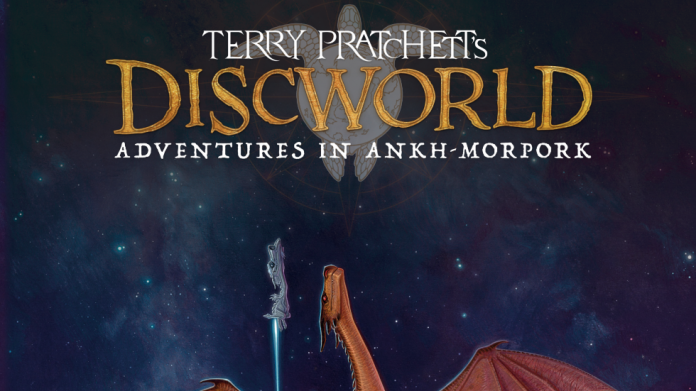Terry Pratchett’s Discworld RPG: Adventures in Ankh-Morpork, a brand new Discworld game, is headed our way soon from Modiphius Entertainment. It’s currently crowd funding via kickstarter until November 7th, so let’s check out the quickstart rules so you’ll know if you want to put down your cash for all those kickstarter-exclusive goodies.
The Basicks
The Discworld Quickstart Guide is a 47 page PDF that you can grab for free off of the Modiphius web store. There’s currently no print version, and as far as I can find there are no plans to produce one. The book itself is split pretty evenly between the rules of the game and Up in Smoke, an introductory adventure, with a few pages left over for sample character sheets. There’s not a ton to say about the book itself. The layout is well done and logical, everything is readable, the art is fantastic. I really like the use of colored callout boxes in the adventure to distinguish at a glance differences between story clues, setting descriptions, character descriptions, and consequences. Every piece of info you would want to look up in that section is incredibly easy to find.
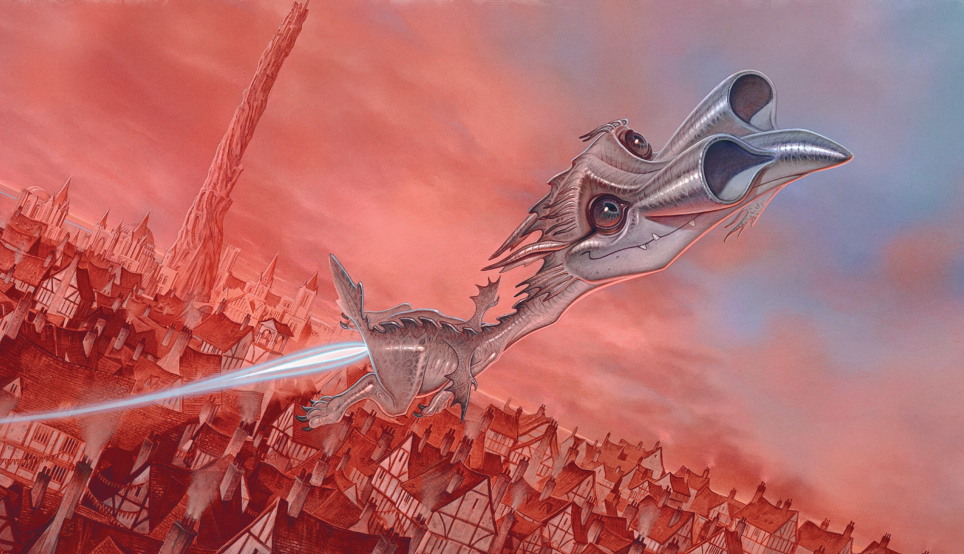
The Ru-els
Adventures in Ankh-Morpork is designed to be an extremely rules-light experience, and the quickstart is cut down even further. There are no character creation rules, for example, but you don’t really need them. There aren’t stats or anything derived, mathematically or otherwise, so creating a character is as simple as making a blank version of the character sheet and filling in the different lines as you’d like.
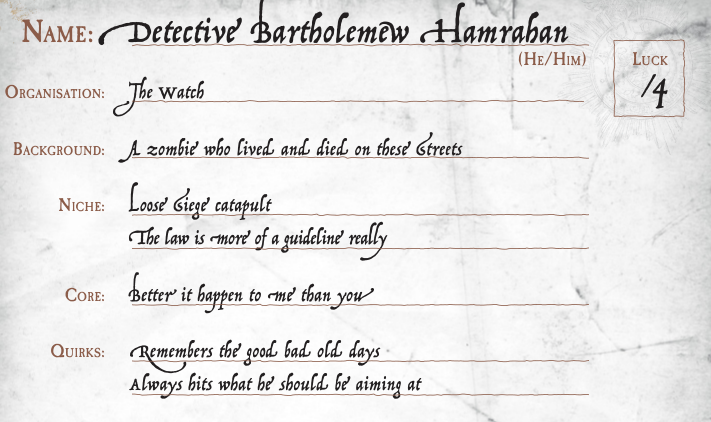
There’s really only one main mechanic to speak of in the game. When you want your character to do something, you tell the gamemaster what you’d like to do, and you use your traits (literally anything on your character sheet, from your name to the notes section) to justify how you do it. The GM will listen to you, and decide what die out of a d4, d6, d10, or d12 you get to roll. The GM will then roll a d8, and whoever rolls higher wins. If the player wins, whatever they wanted to do is successful. If the GM wins, the player fails at what they were doing and faces a consequence determined by the GM. On a tie roll, everyone wins! Both things happen, a successful task attempt and a consequence.
That’s pretty much it, really. There’s some stuff around the margins where a player can spend Luck (a resource handed out by the GM) to help another player at the risk of suffering even worse consequences, or to reduce the consequences of a failure.
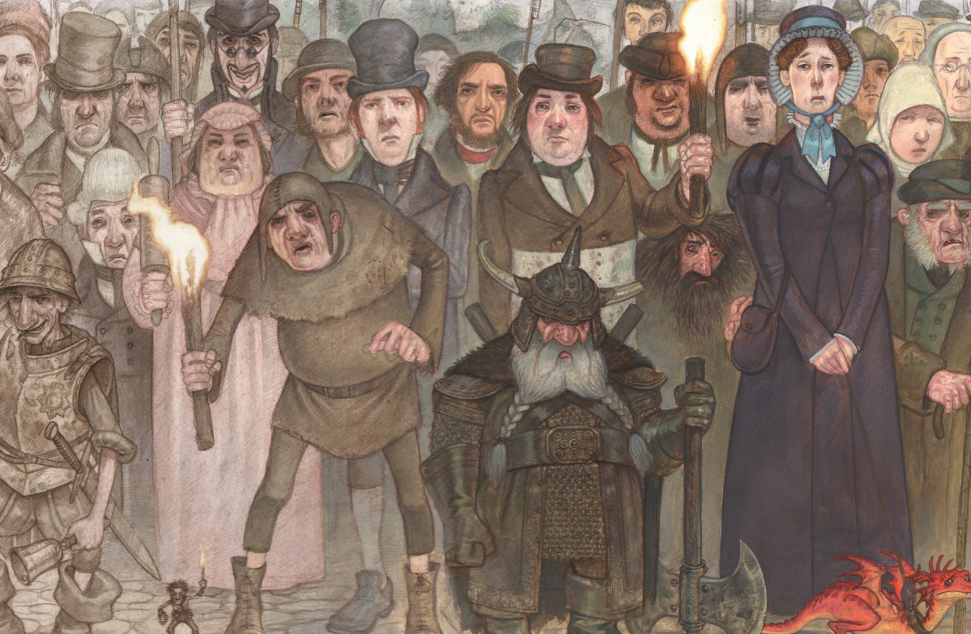
If this sounds vague, that’s because it is. The rules-light nature of the game means everything boils down to a conversation between the players and the DM (a negotiation, if you’re being cynical) punctuated by a single dice roll to see what happens. The game really encourages the players to get creative and funny, using puns (punes) and jokes and having a good time, but there’s not really any mechanical incentive to do so, it’s just for the vibes. If you feel like you’ve justified yourself enough to really deserve a d10 and the GM tells you to roll a d6, there’s not really anything you can do about it except hope to do better next time.
There’s nothing inherently wrong with any of this, but in my brief test game, my player and I found it a bit difficult to come up with things on the fly, her for justifying actions and really thinking out what her character could do, and me for imposing consequences and narrating outcomes. Luckily, the adventure portion of the book is there to give direction to your game session and smooth over a lot of rough patches.
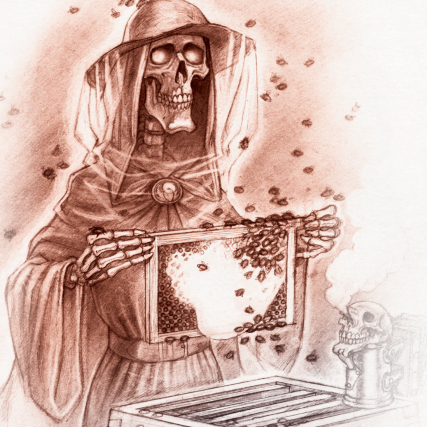
Onward Through Adventure
Up in Smoke, the adventure in the quickstart, is a pretty simple little mystery concerning a break-in at Lady Ramkin’s Sunshine Sanctuary for Sick Dragons. It details seven locations around Ankh-Morpork, and it’s a pretty fun little story that should only take an evening to play. My favorite thing about it, though, is how it doubles as really good GM advice for running the game.
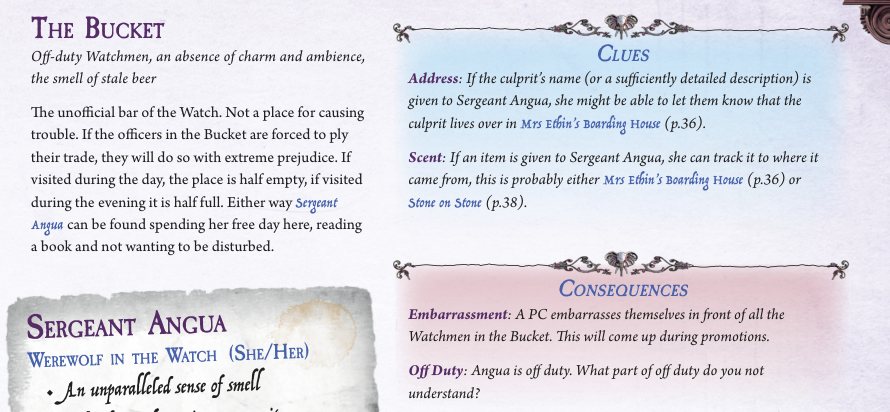
Each location is laid out with a set of clues and NPCs that can be found there, and some sample consequences tailored specifically to that scene and location. I love all of these for multiple reasons, beyond just making it easier to run the game in the moment. The example consequences give you a lot of guidance for the kinds of things that can be setbacks in the moment, and help a GM figure out what feels right for the different levels of consequences a player can suffer. The NPC trait blocks are great for a similar reason. In the game as it’s being played, they let the GM know what’s up with a character, but outside of the game they serve as a ton of examples of different character traits to help players get around what kind of things they might want to write down when creating their own characters.
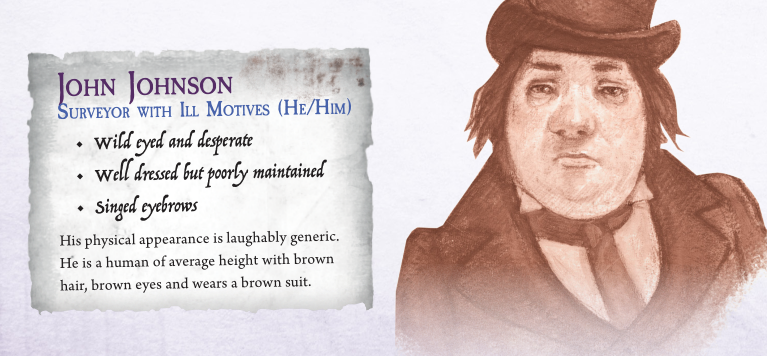
The clues, of course, point PCs in… a direction, sometimes right, and sometimes not, but I think their most important contribution to the game is simply existing. When the players know that they can go to a location and learn a thing that will point them to another location or person or whatever, it gives the game a structure to hang on that’s missing when everything is just totally free-form. No matter what, if the players are just racking their brains trying to figure out what they should be doing, they can always fall back on very basic interactions like “looking around” and “rummaging through people’s stuff in case there’s something interesting in there”.
Because of all the insight into the game the adventure provides, I think the quickstart guide makes for a relatively complete game itself, and that’s a pretty rare thing. A DM who is already familiar with the setting could use the book to run as many games as they want, and because the game is so light on rules I suspect it won’t feel super different from the full release.
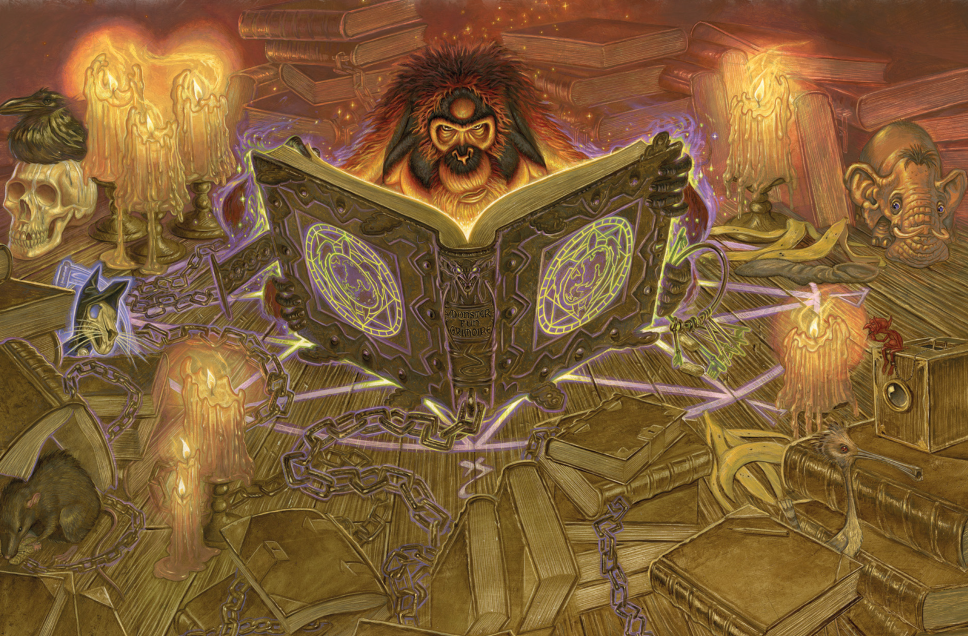
Final Thoughts
I really recommend giving the quickstart a try, whether you’re a fan of the Discworld property or not. I think it does what it’s trying to do well, especially when the examples in the adventure are taken as GMing advice. Ultimately it’s not a game for me, but there’s no way I would’ve really known that had I not given it a shot.
Unless you just have a viscerally negative reaction to the idea of not having defined mechanics to do different things, it’s hard to know if your group is going to take to the idea of such a freeform game or not. And hey, it’s free, so you’ll only be losing time if you don’t like it. If you do, there’s a whole kickstarter worth of stuff to look at. The setting books they’re producing sound like they’ll be great for anyone who likes the setting even if they don’t love the game, so if that’s you then definitely go check it out for those.
Have any questions or feedback? Drop us a note in the comments below or email us at contact@goonhammer.com. Want articles like this linked in your inbox every Monday morning? Sign up for our newsletter. And don’t forget that you can support us on Patreon for backer rewards like early video content, Administratum access, an ad-free experience on our website and more.
